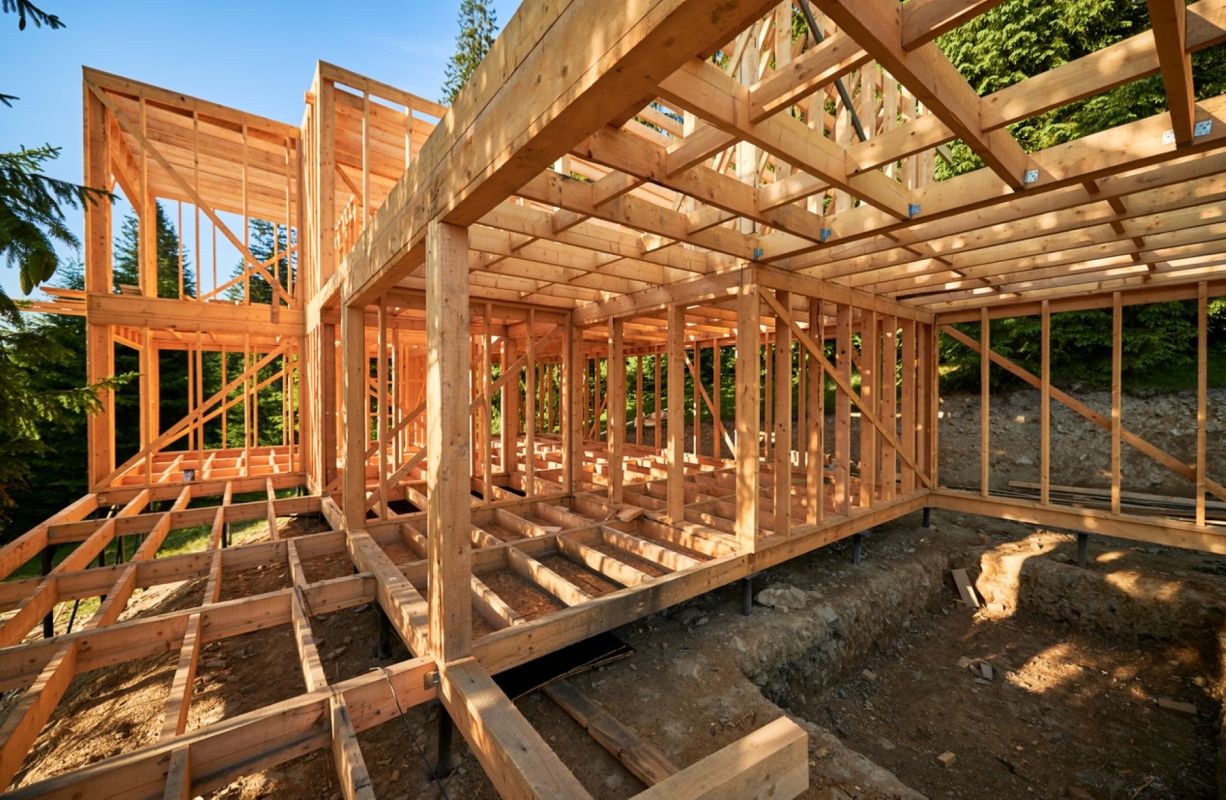In a move that would likely please Abraham Lincoln, builders are using logs to erect wooden structures that are reaching new heights.
Timber is heralded by some experts as a cleaner alternative to steel and concrete, which are part of a construction sector that churns out up to 11% of the world's air pollution, Canada's National Observer reported.
Not without faults (looking at you, toxic glues and adhesives), methods to use timber in builds are improving. The result could help us to change the way we construct our homes and buildings with cleaner processes in mind.
Part of the reason is that wood-made homes and buildings store carbon for decades, per the United States Forest Service.
"As trees grow, they pull carbon from the atmosphere and the soil. When trees are harvested to make products like lumber for homes, some of that carbon continues to be stored," the Forest Service's Jeff Prestemon said in an agency report.
Using timber in construction is a focal point for the Forest Service. The agency considers it an emerging industry, as it accounts for about 4% of the country's manufacturing gross domestic product. What's more, logging creates about $300 billion in products each year.
Milwaukee is home to the world's tallest wooden structure, at 284 feet. The 25-story Ascent Building topped an 18-story structure in Norway in 2022.
"Timber projects like Ascent will support forest health and low carbon buildings across the country," Brian Brashaw, who's leading the Forest Service's national mass timber market development efforts, said in a news release.
Ascent was built with glued-laminated timber columns. Glues and laminates are potential cons to wooden buildings, as they can be toxic. Naomi Keena, an assistant professor at Montréal's McGill University, has been studying alternatives.
She told the Observer that dowel-laminated timber is among the solutions. The method uses dowels to join the timber. Using agricultural waste, algae, coconut husks, and even fungus to make natural resins are other options, Keena said. Fungal networks are already being used to make a concrete alternative called mycocrete.
"People don't think about 50 years' time," Keena said, "but if we keep building the way we're building now … we're going to have the same issues in 50 years' time."
Deforestation is another concern of increased logging, particularly in crucial rain forests where efforts are underway to save them. But the Forest Service says that cutting trees from overpopulated forests supports the woodlands, reducing wildfire risk.
A combination of smart logging and cleaner glues and adhesives might help to bring timber to bigger projects more sustainably — and possibly even top Ascent one day.
"As we develop these new products that are being lauded as green … we have to think about how they can have a long-term, sustainable life cycle," Keena said in the Observer report.
Join our free newsletter for weekly updates on the coolest innovations improving our lives and saving our planet.









